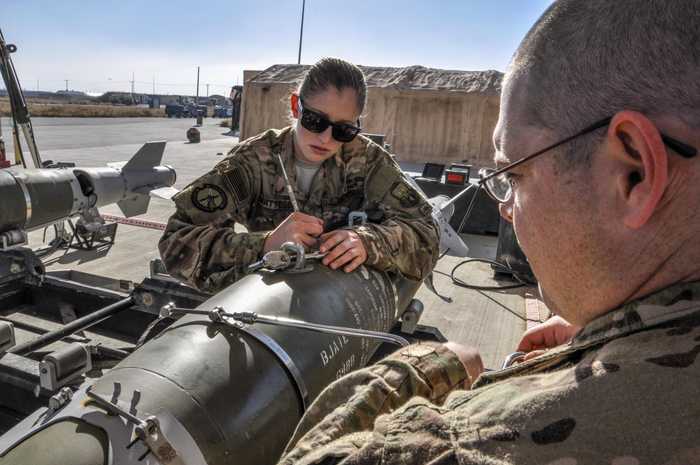Published 15:19 IST, August 23rd 2024
Bagram Airbase Loss was a ‘Strategic Blunder’, Trump Cites Proximity to China’s Nuclear Facilities
Former President Donald Trump has reignited debate over the U.S. withdrawal from Afghanistan by advocating for the retention of Bagram Airfield.
- Defence
- 4 min read
Washington DC, USA: Former President Donald Trump, who played a significant role in negotiating the U.S. withdrawal from Afghanistan, has recently expressed that the United States should have retained its largest base in Afghanistan, Bagram Airfield, to prepare for potential future conflicts with China. For over 20 years, Bagram Airbase served as the epicentre of U.S. and NATO operations against the Taliban and al-Qaeda. The base, initially built by the Soviet Union in the 1950s, became a key strategic asset for the U.S.-led coalition forces following their move into Afghanistan in December 2001.
The Bagram airbase, located in Parwan province, was developed into a sprawling military installation capable of housing up to 10,000 troops. It was served by two runways, the latest of which is over two miles long, making it capable of accommodating large cargo and bomber aircraft. Bagram's significance extended beyond its military capabilities, featuring facilities such as swimming pools, cinemas, spas, and fast-food outlets like Burger King and Pizza Hut. The base also included a notorious prison, known as Afghanistan's Guantanamo, where U.S. forces detained and interrogated al-Qaeda suspects.
Trump Highlights Strategic Value of Bagram in Countering China
A day after his running mate, Senator J.D. Vance (R-Ohio), condemned the war in Afghanistan as a failure, Trump argued that Bagram Airfield should have been maintained as a strategic asset against China. Speaking on Thursday night, Trump emphasized the base's proximity to China, stating, “They also gave up Bagram [Airfield], one of the biggest bases anywhere in the world, the longest runways, most powerful, hardened, thickened runways. We gave it up. I liked it not because of Afghanistan. I liked it because of China. It's one hour away from where China makes their nuclear weapons.”
-1724405630312.webp)
Bagram Airbase was inherited by the U.S. after the Taliban's overthrow in 2001. At that time, the base was in ruins, having been abandoned, but the U.S. rebuilt and expanded it into a 30-square-mile complex. Over the years, Bagram became a symbol of American military power in the region, with every U.S. president since George W. Bush visiting the base during their tenure, further underlining its strategic importance.
Bagram's Historical and Strategic Role in U.S. Operations
The Soviet Union originally constructed the airstrip at Bagram in the 1950s during the Cold War. Following a coup in 1978, the Soviet-backed People's Democratic Party of Afghanistan came to power, leading to increased instability. To secure its interests, the Soviet Union deployed armoured units to Bagram and other bases, eventually leading to the 1979 Soviet invasion of Afghanistan. For the next decade, Bagram served as the main base of operations for Soviet forces, with airborne troops and Su-25 jets conducting missions from the airfield.
-1724405914434.webp)
After the Soviet withdrawal in 1989, Bagram witnessed intense fighting between the Northern Alliance and the Taliban throughout the 1990s. Following the 9/11 attacks, U.S. forces, along with allies like India, Iran, and Russia, supported the Northern Alliance and landed at Bagram to initiate operations against the Taliban. The base continued to grow in size and capabilities, with a new runway constructed to accommodate up to 10,000 soldiers by 2009.
Bagram's strategic significance is further highlighted by its location, 60 km north of Kabul, making it key to controlling much of Afghanistan. The base's extensive facilities and strategic location made it a crucial asset for U.S. operations in the region, with every U.S. president visiting during their time in office.
Debate Over Bagram's Role in U.S.-China Relations
China, which shares a border with Afghanistan through its Xinjiang Uyghur Autonomous Region, is known to have nuclear facilities in the region, though they are located about 1,000 miles from the Afghan border. The idea of retaining Bagram as a strategic asset against China was dismissed by Secretary of Defense Lloyd Austin during a congressional hearing in September 2021. Austin argued that retaining Bagram would have required up to 5,000 U.S. troops to operate and defend the base, contributing little to the mission of protecting the U.S. embassy in Kabul, which is located some 30 miles away.

Austin also noted that staying at Bagram for counterterrorism purposes would have meant continuing the war in Afghanistan. However, the idea of using Bagram as a strategic base against China was previously advocated by Rep. Mike Waltz (R-Fla.), who argued that abandoning the airfield would leave the U.S. without a key asset in a country bordering China.
Updated 15:19 IST, August 23rd 2024